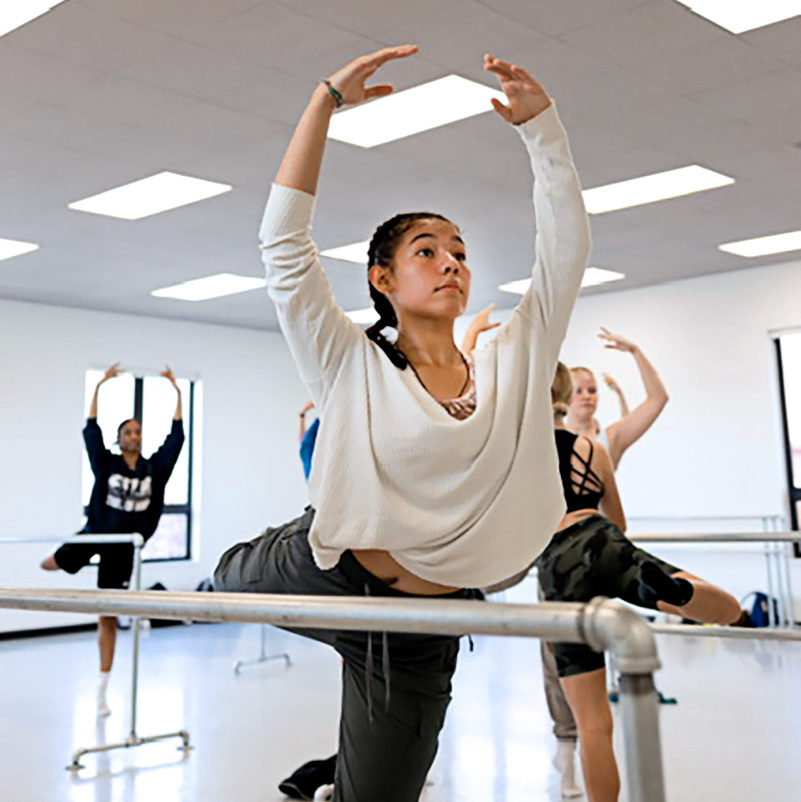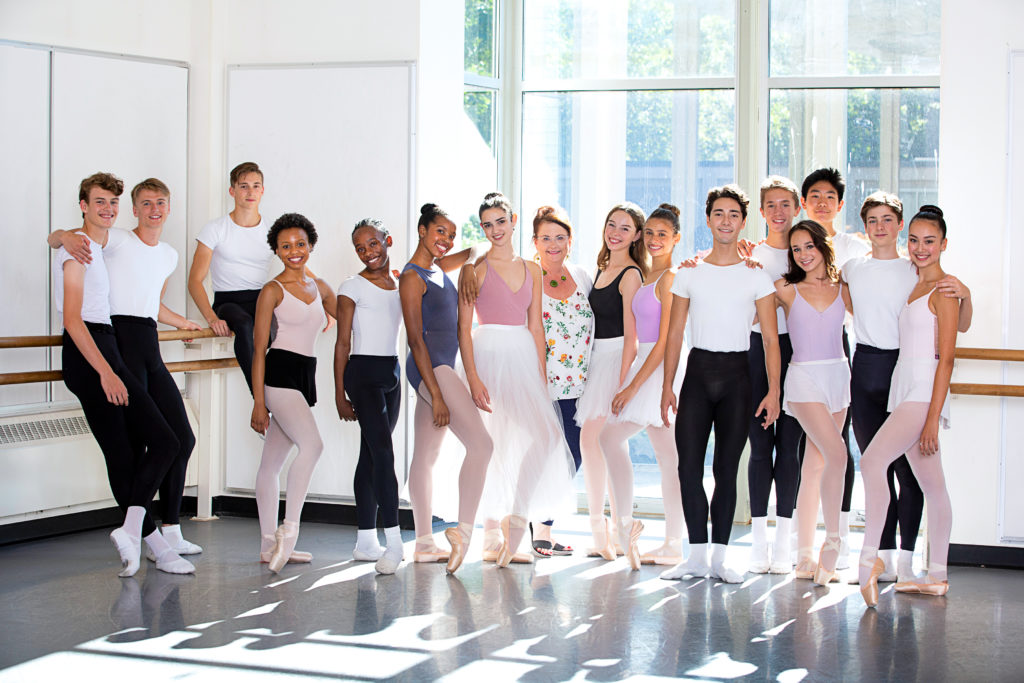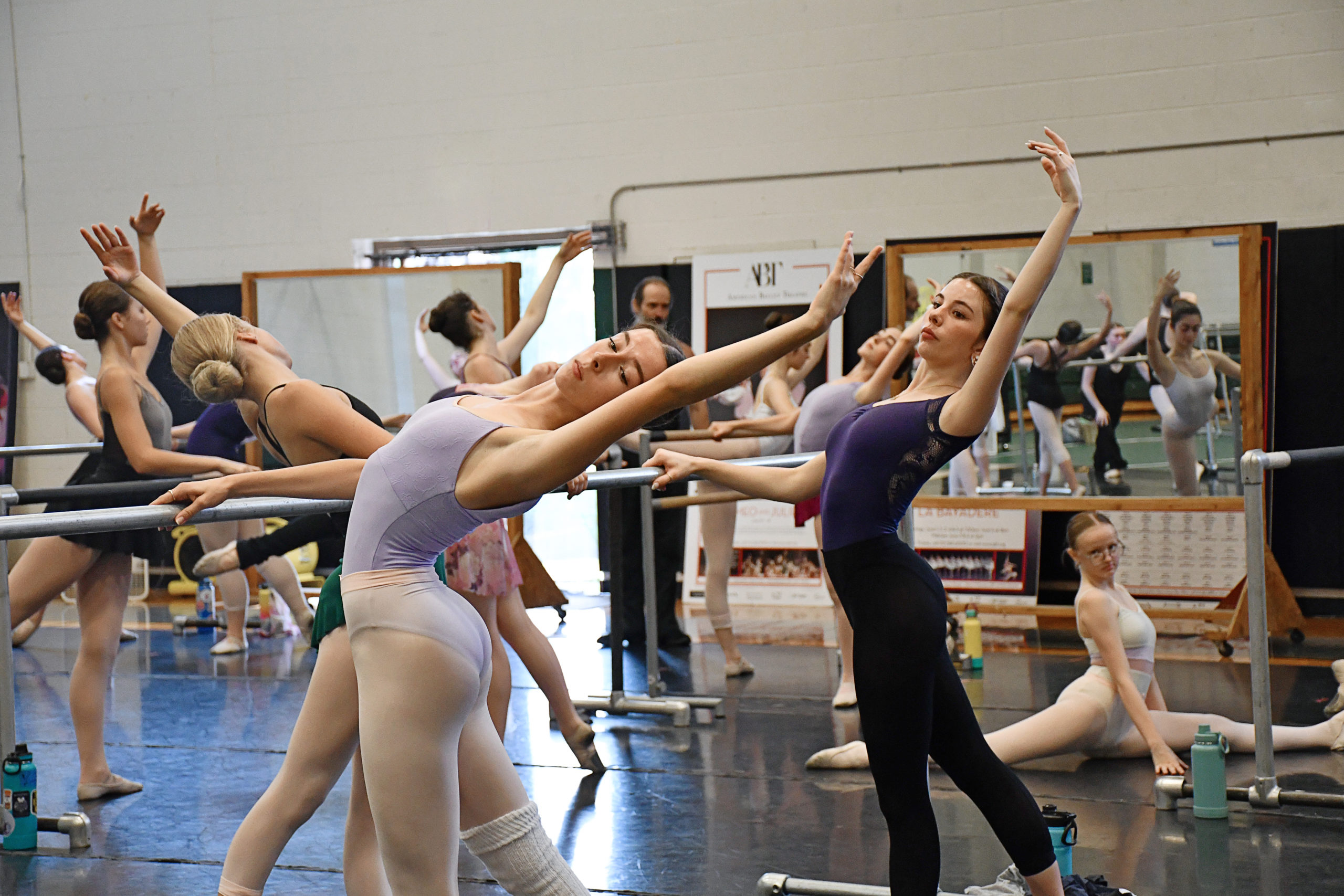How to Choose the Right Summer Intensive Program
Last summer, high school junior Charlotte Bollschweiler attended Regional Dance America’s National Choreography Intensive. “It was fun working with choreographers discovering their personal choreographic style,” she says. NCI was Bollschweiler’s first away-from-home summer intensive, and she wants to travel again this year. While she’d love to return to NCI—“The environment was so accepting and welcoming,” she says—she’s also eager to audition for other intensives.
Whether you’re thinking of attending your first summer program or are a summer study veteran looking for a new challenge, there’s a wealth of options. How can you ensure an exciting and enriching experience?
What Are Your Goals?
Intensives aren’t one-size-fits-all. Think about what you hope to get out of summer study, and then “look at whether each program aligns with where you see yourself down the road,” says Tracy Inman, co-director of The Ailey School.
If you see yourself dancing with a certain company, you might think attending their summer intensive is the best way to get there. But, cautions Inman, “training at a certain place doesn’t mean you’ll get into that company.” Rather than dwelling on the name and professional affiliations of a program, reflect on what you could take away from the training itself.
Don’t be afraid to go the extra mile with research. Michelle Nielsen, artistic director of SALT Contemporary Dance in Salt Lake City, Utah, suggests highlighting one or two programs that look good to you…and then continuing to dig. “There are all these different avenues out there,” she says. “Something might be right for you, and you’ve never even heard of it!”
Are there gaps in your year-round studies? Seek out intensives that might fill them. “If you don’t have pas de deux or contemporary classes at home, you can find those at a summer intensive,” says Joanne Whitehill, director of
Burklyn Ballet Theatre. “If you need more performing experience, some summer programs will give you that.”
You don’t have to step outside of your box, but if you do, “be prepared to hear something different than you’re used to,” says Denise Bolstad, managing director of Pacific Northwest Ballet School. “Be open-minded to different types of training.” Discomfort can be a place of growth—if you let it.
Will You Be Challenged?

Nielsen says one of the most important questions a dancer can ask of a program is: “Will it stretch me?” That might mean dancing more hours than you’re used to or that the classes are more challenging than what you have at home. Or it might circle back to trying new or uncomfortable things.
How many hours will you be in the studio each day? What classes are required? Are there any electives? Are there multiple levels—and are you placed based upon your skill in each dance genre, or do you move through the program in a cohort? After you know what your schedule might look like, think about whether you’re ready to sustain that pace for two, three, four or even six consecutive weeks. The aim is to push yourself, but not so hard that you burn out.
Who’s Going to Be There?
A summer intensive’s most valuable asset is its people. Look into a program’s faculty, as well as how much time you’ll spend with them. When you’re with the same teachers the entire time, “instructors really learn what you need to work on and how to help you,” Inman says. On the other hand, a rotating faculty exposes you to varied points of view; at Burklyn, there’s a new master teacher each week, which, Whitehill says, “gives a taste of different styles and paths.”
On the rehearsal and performance side, will you be learning established repertory? Exploring new moves with up-and-coming dancemakers, as Bollschweiler did at NCI? If this year’s choreographers haven’t been announced yet, look at previous summers’ offerings to see if the artists listed are ones who intrigue and inspire you.
Is the Environment a Good Fit?
An intensive’s location will have a huge impact on your experience. Cities like New York, Chicago, San Francisco and Los Angeles have vibrant dance and theater scenes—but they can be expensive, and you could end up with a complicated commute to class. Meanwhile, programs like Burklyn’s (which takes place on the campus of Northern Vermont University) boast rural settings where you can focus on your art.
“We encourage younger dancers to look at programs where the dorm and school are somewhat self-contained,” Bolstad says. If you’re older, maybe you’re ready to experience the daily routine of a professional dancer—commute and all. As Nielsen puts it, “What’s the lifestyle attached to the dream?”
If you want to get a sense of the atmosphere within a school, Inman advises requesting a tour of the facility. If that’s not accessible to you, Whitehill recommends calling or emailing with specific questions. “If someone answers your email or returns your call, you know you’re less likely to be just a number to them,” she explains. A few things you might want to know: What are the studio dimensions? What’s the average class size? Is there live music? If you’ll be living on campus, what’s the dorm like? Will you have a roommate? Who are the counselors?
PNBS encourages students to talk candidly to each other about past summer study experiences. “Our kids are the best ambassadors for the intensives they’ve attended,” Bolstad says. If you don’t know anyone who’s gone to a program you’ve got your eye on, search social media. Reach out to dancers who’ve been there. Chances are, they’ll be happy to help.

Can You Afford It?
There’s no way around it: Summer study is expensive. If a program seems out of reach, investigate every option. “Be proactive in showing your interest,” Inman says. “It never hurts to ask, ‘Is there funding that could help me get to your school?’ ”
You may be eligible for financial aid or a work-study situation. You could apply for scholarships. Whitehill notes that some intensives have day rates for students that live nearby. “You also have to consider the total cost of the summer,” she says. “Being in New York City is more expensive than being in Vermont.” Perhaps there’s a trade-off: Choosing a program in a less pricy area could allow you to train for more weeks.
“Audition for as many places as you can,” says Bolstad. “Make an A, B and C list. You never know how things will work out. Some schools give merit scholarships right away, at the audition. Or you might get in, and when you inquire about financial assistance, it could be there.”
Making the Most of It
“Students tend to think there’s something magical about summer courses,” Bolstad says, as though getting into the right one will secure their future. “But,” she stresses, “given all of the good options out there, even your fourth or fifth choice is probably going to be beneficial.”
As audition season kicks off, try to let go of some of the stress around finding the single most perfect intensive. Commit to giving your all, wherever you end up. Be okay with feeling uncomfortable at times. Strive to grow as a mover, an artist and a person. Then you’ll be able to return to your year-round school with broader horizons and a fresh outlook.




